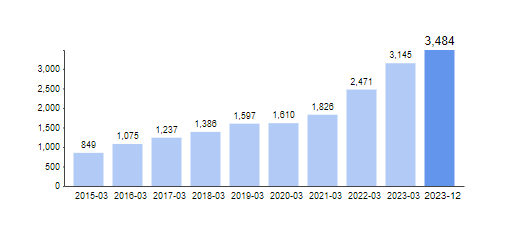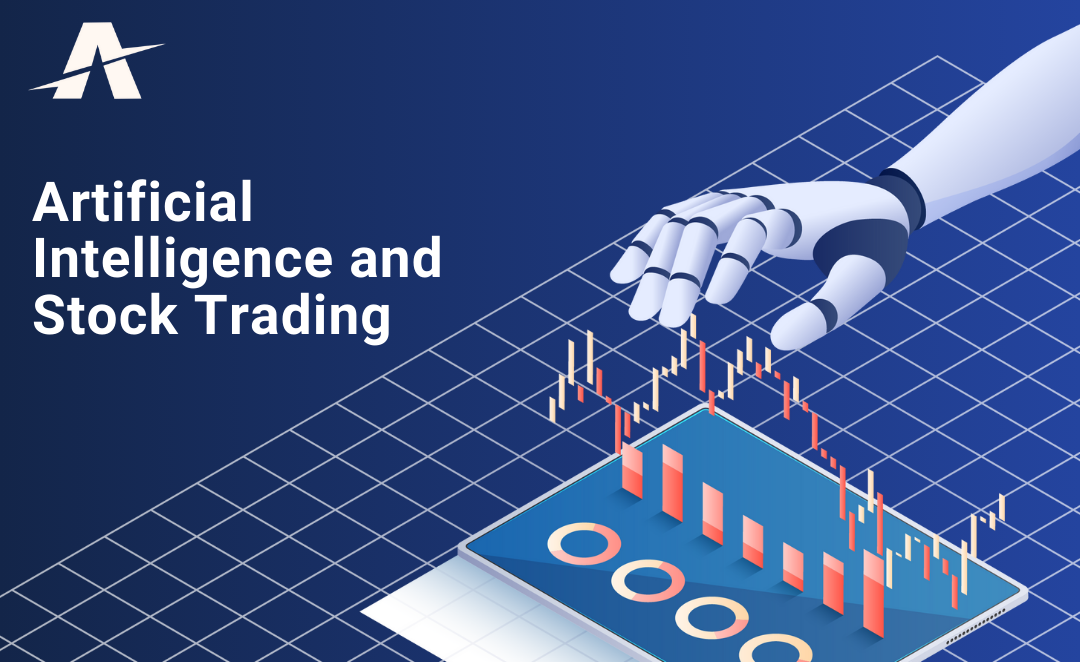20 Handy Ways For Choosing AI Stock {Investing|Trading|Prediction|Analysis) Sites
Top 10 Ways To Evaluate The Accuracy & Performance Of Ai Stock Prediction/Analyzing Trading PlatformsThe accuracy and efficiency of AI stocks and trading platforms is crucial to make sure you're using a tool that can deliver accurate and reliable information and forecasts. Here are the top ten crucial tips to evaluate these platforms:
1. Backtesting Results
What to Look Out For Make sure the software allows backtesting. This allows you to evaluate the performance of predictions based on historic data.
Why it matters: Backtesting can aid in confirming the AI accuracy of the models through comparing the predictions to real historical outcomes.
Look for platforms with customizable backtesting parameters.
2. Real-Time Performance Tracking
What to Look For Check the performance of the platform in real-time market conditions.
Why it matters Real-time performance provides a much better gauge of its efficiency rather than relying on only historical backtesting.
TIP: Sign up for a free demo or trial account to see how you compare the market's real-time forecasts with actual market movements.
3. Prediction Error Metrics
What to Look Out For to determine the accuracy of predictions by evaluating metrics like the Mean Absolute Error(MAE) and the Root-Mean Squared Error(RMSE) or Rsquared.
What's the significance of these metrics give a quantitative measurement of how closely predictions correspond to the actual results.
Tips: Platforms that openly disclose their metrics tend to be more transparent and reliable.
4. Rate of Success and Win Rate
What to Watch Out For Look for the platform's success rate (percentage based on correct predictions) and also its percentage of success.
What is important Why it matters: A high win rate and success rate indicates higher precision in forecasting as well as the potential for profitability.
The system cannot be perfect. Beware of websites which promise unrealistic win rate, e.g. 90% %+),.
5. Benchmarking Market Indices with Benchmarking
What to look for Check the platform's predictions and performance against the major market indexes (e.g., S&P 500, NASDAQ).
What is important: It helps determine whether the platform performs better or less than the overall market.
Tips: Seek out regular outperformance across multiple time periods, not just quick-term gains.
6. Consistency of Market Conditions
What to watch out for What is the performance of the platform when there are various market conditions.
The reason it's important A strong platform works well in all markets, not just those with favorable conditions.
Tips - Test the platform predictions during volatile market conditions or times of low volatility.
7. Transparency in Methodology
What to look out for: Understand the AI algorithms and models employed (e.g. neural networks and reinforcement-learning).
What's important Transparency lets you evaluate the scientific and technical reliability of a system.
Beware of platforms that make use of models with "black boxes" that do not explain how predictions are generated.
8. User Reviews and Independent Tests
What to look for: Read user reviews and independent testing and third-party evaluations.
Why it matters The independent reviews and tests offer objective insights on the platform's accuracy and performance.
Tip: Check forums like Reddit, copyright, or financial blogs for user experiences.
9. Risk-Adjusted Returns
What to look out for You should look for risk-adjusted measures like the Sharpe Ratio (or Sortino Ratio), to evaluate the platform's performance.
Why It's Important The numbers reflect the risk required in order to gain the desired returns. They offer a more accurate picture of the overall performance.
Tip: A high Sharpe Ratio (e.g., above 1) indicates higher risk-adjusted returns.
10. Long-term record-breaking records
What to look out for: Determine the overall performance of the platform over time (e.g. 3 to 5 years).
The reason it's important The long-term results are a far more reliable indicator of reliability as than short-term performance.
Beware of platforms that only display short-term results or cherry-picked success.
Bonus Tip: Make use of Demo Accounts to test.
Use a demo account or free trial to try out the prediction of the platform in real-time, without risking any real money. You can test the reliability of predictions as well as their performance.
Following these tips can help you assess the accuracy and performance of AI platforms for stock prediction. This will enable you to select a platform that is compatible with your trading goals and the risk you are willing to take. It is essential to understand that there isn't an ideal platform. The most effective approach is to mix AI insights with your own research. View the best additional reading about best ai etf for more advice including ai stock prediction, ai trading platform, ai investing app, ai stock price prediction, best stock analysis app, chart ai for trading, incite ai, trader ai, stock analysis websites, ai stock price prediction and more.

Top 10 Ways To Evaluate The Speed And Latency Of Ai Stock Trading Platforms
Speed and latency is crucial when it comes to looking at AI stock prediction/analyzing trading platforms. This is especially true for high-frequency traders, algorithmic traders, and active traders. Milliseconds could affect the execution of trades and even profitability. Here are 10 top methods to determine the speed and the latency of trading platforms.
1. Real-Time data feeds can be used to determine the quality of the real-time data you have
Speed of delivery of data - Ensure that the platform can provide real-time data with a minimal delay (e.g. a sub-millisecond latency).
Verify the source's proximity to most important exchanges.
Data compression: Determine whether the platform utilizes effective data compression techniques to speed up the delivery of data.
2. Test Trade Execution Rate
Speed of processing orders: How quickly the platform executes and processes trades once you've submitted an order.
Direct Market Access (DMA) - Ensure that the platform supports DMA. This allows orders to be sent directly to the exchange, without the necessity of intermediaries.
Examine the execution reports to see if they include timestamps of order confirmation, fill, and submission.
3. Examine the Receptivity of Platforms
User interface speed (UI) Test the speed at which your platform's user interface responds your inputs.
Chart updates: Make sure you check if charts and visualizations update in real-time and without delay.
Performance of mobile app If you are using a mobile app on your phone, be sure that it's as efficient as the desktop version.
4. Find out if the network infrastructure is low-latency.
Server Locations: Check whether the server used by the platform is with low latency located near major hubs for financial exchanges or financial hubs.
Co-location services: Check whether the platform provides co-location, which allows you to host your trading algorithms on servers near to the exchange.
High-speed network: Determine if the platform is using high-speed fibre-optic networks or other technologies with low latency.
5. Backtesting the simulation speed and test backtesting
Test the platform's capability to process and analyze past data.
Latency in simulation: Make sure your platform can simulate trades with no noticeable delay.
Parallel processing: Check if your platform uses parallel or distributed computing to speed up calculations.
6. Examine API Latency
API responses: Determine the speed at which APIs can respond to requests (e.g., fetching information from the platform, putting in orders).
Limits on rates. Examine the API's rate limits in order to avoid delays while high-frequency trading.
WebSocket support - Check to see if your system is running the WebSocket protocol to support low-latency, real-time data streaming.
7. Test Platform Stability when Loaded
High-volume Trading: Simulate huge numbers of trading scenarios to test if your platform is reliable and stable.
Check the platform during times of high volatility in the market to ensure it is able to handle sudden changes in price.
Testing stress: Find out whether the platform permits you to test your strategy in extreme circumstances.
8. Evaluation of Connectivity and Network
Speed requirements for internet: Check that your internet connection has the speed recommended by your internet provider for maximum performance.
Connections that are redundant: Make sure you know that your platform is equipped with redundant internet connections. This can help you avoid downtime.
VPN latency. If you are using the VPN check to see whether it causes a significant amount of latency.
9. Look for Speed Optimisation Features
Pre-trade Analytics: Make sure the platform offers pre-trade analysis to optimize the speed of execution, order routing and other variables.
Smart order route (SOR) : Check to determine whether SOR is used by the platform in order to determine the most speedy and cost-effective execution venues.
Monitoring latency: Verify whether the platform has tools to analyze and monitor latency in real time.
Review User Feedback & Benchmarks
User reviews: Examine user feedback to assess the platform’s performance on latency and speed.
Benchmarks from third parties: Search for independent benchmarks or reviews that evaluate the performance of the platform to that of its competitors.
Case studies: Check if a platform has instances or case studies which highlight the features that are low-latency.
Bonus Tips
Free trial period: Try the platform's speed and latency in real-world situations using a demo or free trial.
Customer Support: Make sure whether the platform offers assistance for problems related to latency or for optimization.
Hardware requirements: Verify whether the platform needs specific hardware (e.g. high-performance PCs) to operate at its maximum speed.
These suggestions will allow you evaluate the speed and latencies of AI platform for stock prediction and analysis. In this way you can select a platform that meets your requirements while minimizing delay. Trading platforms with low latency are essential for high-frequency algorithmic traders. small delays could negatively affect their earnings. Take a look at the best helpful resource about invest ai for site info including best stock analysis website, ai options trading, ai trader, incite, stock ai, free ai tool for stock market india, ai trader, trader ai, chart ai trading, ai stock trading bot free and more.
